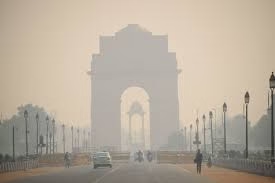The Delhi government’s cloud seeding pilot project conducted at locations including Mayur Vihar and Burari has shown promising results, with PM10 levels dropping by up to 41.9% and a notable improvement in the Air Quality Index (AQI), according to an official statement released on Wednesday.
Authorities emphasized that while the results are encouraging, cloud seeding is only one part of a broader clean air strategy that integrates multiple measures such as strict pollution enforcement, mechanical road sweeping, vehicle emission checks, and improved waste management.
“Science-driven policy lies at the heart of Delhi’s clean air mission,” said Environment Minister Manjinder Singh Sirsa. “Even with low cloud moisture, the trial yielded measurable particulate matter reductions. However, our mission is not reliant on a single intervention — we are combining technology with continuous civic engagement and enforcement to achieve real progress.”
As of Wednesday, Delhi’s AQI stood at 279, categorized as “poor.”
Sirsa added that the visible improvements in air quality are a result of “a holistic approach backed by evidence-based policies and consistent civic action benefiting all residents.”
Broader Clean Air Measures Underway
The government noted that another round of cloud seeding may be carried out in the coming days, depending on favorable weather and humidity conditions.
According to official data, recent citywide cleanup efforts resulted in:
- 12,017 metric tonnes of garbage removed from Delhi’s limits
- 2,970 km of roads swept mechanically
- 772.64 kilolitres of water used for dust suppression
- 2,455 metric tonnes of construction and demolition (C&D) waste cleared in a single day
Additionally, 92 challans were issued for environmental violations, amounting to ₹27.59 lakh in fines.
Authorities also issued 10,253 challans for vehicular pollution, while 68 complaints related to air quality were received across platforms like 311 App, Green Delhi App, and SAMEER App, out of which 203 were resolved.

